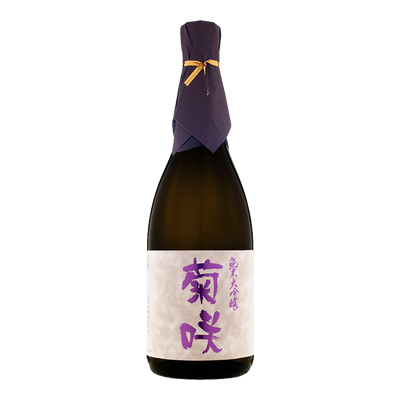Choosing an aged bottle of wine – 2. Ullage & Capsule
With the introduction of the same topic last time, there are a few categories of checking the conditions of wines. Shall talk more about ullage level and capsule this time.
Ullage level, or known as fill level, is the gap of air between the bottom of the cork and the wine. The ageing process of wine can be beneficial due to this small amount of air. However, when wine ages, some wine is lost in the process of evaporation and diffusion for cork closure, which is not completely air-tight; or if by absorption of the cork.

Obviously, the greater the amount of ullage, the higher risk of oxidation. The ullage level can be a good way to show if the wines are appropriately stored. Wines which are stored at proper humidity (ideally 65%-75%) and temperature between 12-15°C have a slower rate of evaporation and diffusion rate. In general, it is the most important indicator if the wines are in good shape.
Michael Broadbent, Master of Wine and senior consultant of Christie’s auction, developed an ullage guide. It was mainly for the Bordeaux shape bottles, taking the level according to the bottle shape and indicating the level with neck and shoulder, like the body parts. For the Burgundy bottles, due to the curvy shoulders, it is not really the practice to use terms like neck or shoulder, etc. It is usually reviewed by the centimeters (cm) from the cork bottom. Attached the ullage guide, source from Decanter.com.
Another important indicator is the foil/capsule. The main (or very original) purpose of it is to protect and cover the cork from exposure to insects or small animals. For back-vintage wines, it is usually made by metal or lead material, which is not elastic or resealable. Thus, it can be served as one of the wine authentications.
However, due to the material, oxidation/corrosion is often the case for old wines. Please do not be worried if you see mould on top of the cork, just beware of the signs of seepage around the bottom of capsule around the neck. Attention should also be paid to some terms like “corroded”, “missing”, “cut” which are used to describe different conditions of the capsule.
What if it is not metal capsule? Some wines, usually some expensive ones, might use wax instead of metal capsule. It is rather common if it is chipped or partially missing due to the transportation. Nonetheless, it is not recommended to take if the entire cork is exposed or the wax is not original.
Opened two back vintages (thanks to my friend!) for this topic. You can see that the ullage level of the two Burgundies is really low. I would suggest not to purchase these bottles, worth trying when they are free though! The capsule also indicates that the wines might not be in very good conditions. Let’s open the wines with the next article!
Please click here to read 1. Foreword & Intro





